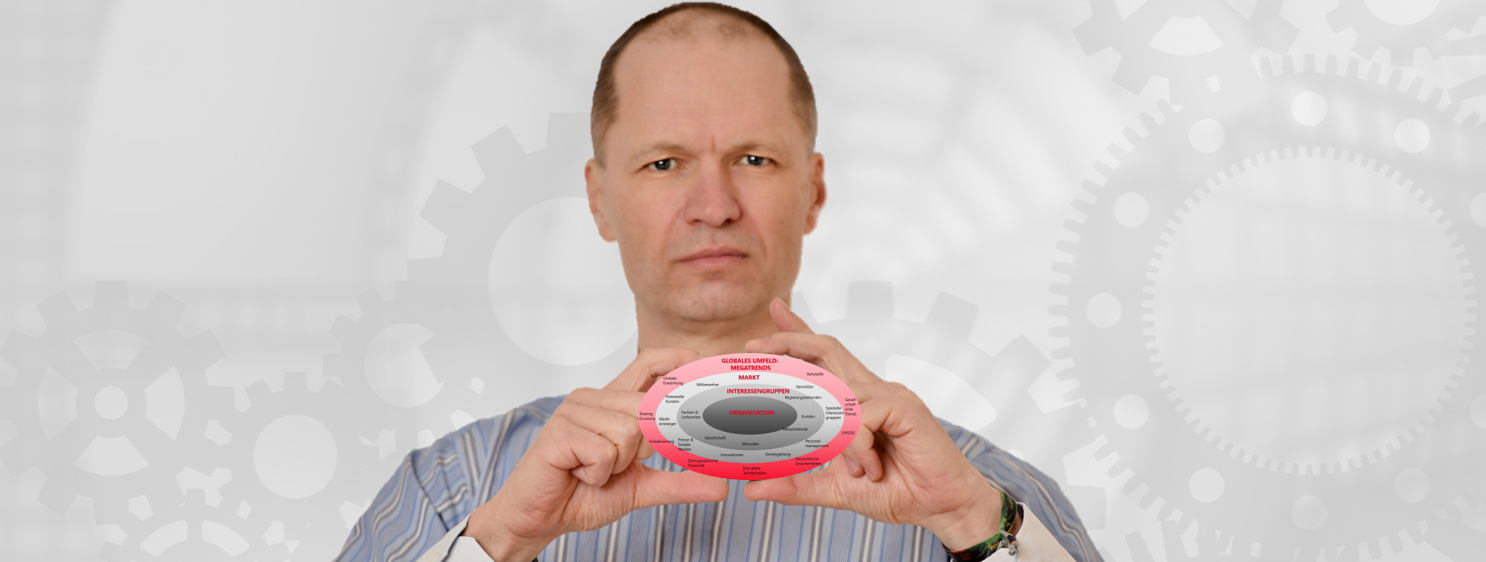The organization – living system or trivial machine?
When approaching this question from the systemic stance, the distinction between “living” and “non-living systems” comes to mind.
If you think of organizations as non-living systems, then descriptions like “the organization behaves like a machine” that runs well, or “this problem with leadership is something we need to fix with the right tools” fit the bill. One can quickly get the impression that the human being with his “clumsiness” hinders or even disturbs the “smooth processes”. Therefore, we quickly leave such thoughts behind and devote ourselves to more helpful considerations: namely, the “living” organizations. The human factor makes the organization a social or psychological system and thus more dynamic and diverse than a trivial machine. Unfortunately, there are still areas where man – actually a non-trivial machine – has to work as a trivial machine, but for this overcoming he at least gets his reward!
In the EFQM approach, diversity brings the desired variety in the way people work together. Related to this, creative, innovative – and in some cases disruptive – thinking is an essential ingredient to creating value and achieving improved performance. In order to appropriately limit and align the colorfulness, desired behavioral norms are shared via a common corporate culture.
Modeling the Ecosystem – Organizational Constellation on Paper?
If we now move on from people to the organization and consider it in its relevant environment, we encounter a new term from the EFQM Model 2020: the ecosystem. This is defined as the environment and systems outside the organization by which the organization is influenced, or which are influenced by it. These interdependencies must be well recognized, managed and developed.

©qualityaustria
Viewed through the systemic lens, the concept of “context” lights up in this regard. This provides the necessary framework and thus gives meaning to the actions.
The connecting factor between the EFQM approach and the systemic view is the claim to achieve clarity about the ecosystem or context. Similar to an organizational constellation, system parts are to be identified and positioned appropriately to each other. The interactions between the system elements are then examined, patterns are identified, interactions are analyzed and, if necessary, (re)designed.
This means that the ecosystem is viewed as a model, often in a simplified graphical representation or visualization. This reality construction (note: systemic constructivists may feel appropriately appreciated at this point) reduces the complex, “real landscape” to a manageable and communicable map. And thus issues can be concretely named, addressed, evaluated, processed and managed.
When you recognize a pattern, does the research stop?
Man always tries to understand patterns within the framework of his perception. However, he can only recognize those parts which he has already created in himself and thus “recognizes”. Accordingly, the modeling of the ecosystem can also be exhausting, since experience shows that one does not know all elements or their influence. But this is exactly the advantage of doing this design in a group – perhaps with new colleagues or even externally involved or affected people.
There you can expand your own frame of thinking, understand new positions and perspectives on the landscape through active listening, and illuminate your own blind spots. This researcher role is also specifically promoted in the EFQM approach. Namely through new model contents that many organizations have not yet recognized and thus do not have on their personal RADAR (note: experienced EFQM assessors may be reminded of the RADAR logic and also feel appreciated at this point).
And where might such unexplored areas lie? For many organizations, it has not yet become sufficiently visible in the fog that contributions and positive co-design of the economic, ecological and social framework are very welcome.
So let’s break new ground together to discover ourselves and foster a culture of doing things together (co-creation). And everyone has the chance to be a helpful role model for everyone else by taking the first step. Let’s work together on this and feel free to contact me!
With excellent regards, Johann Sauermann

